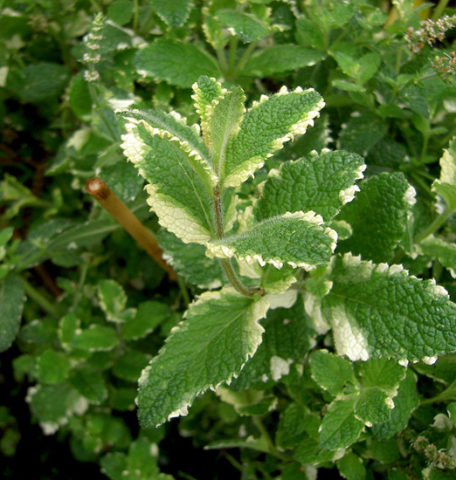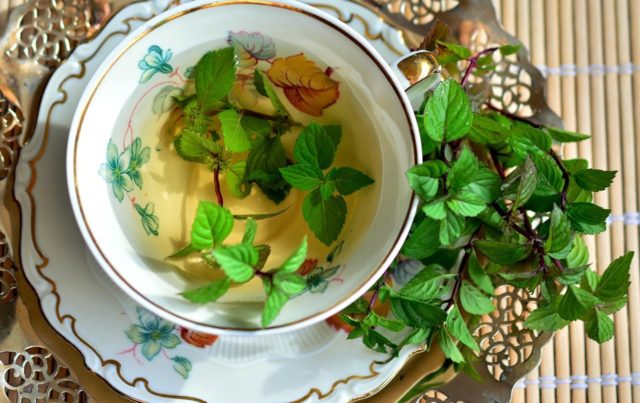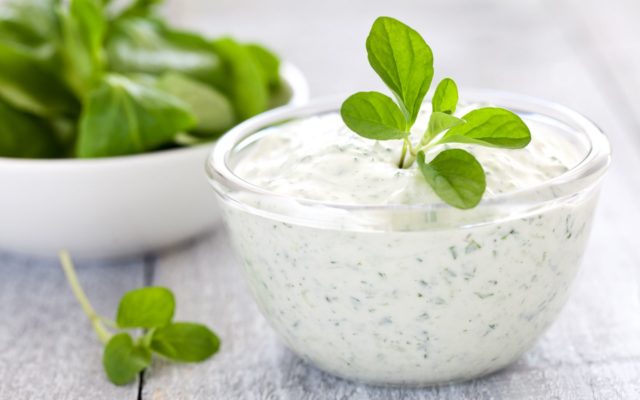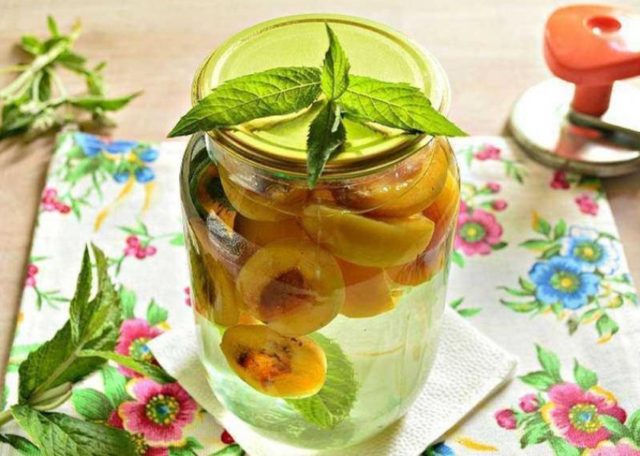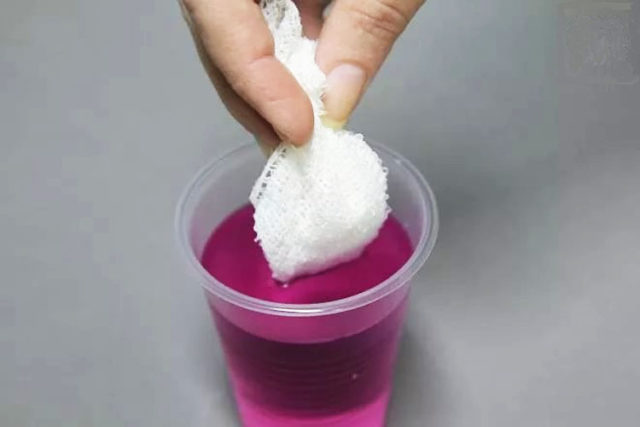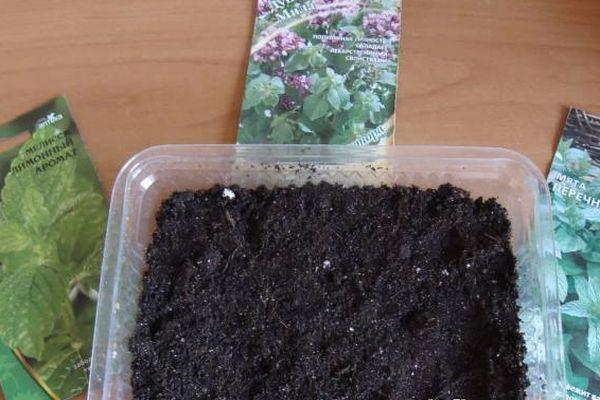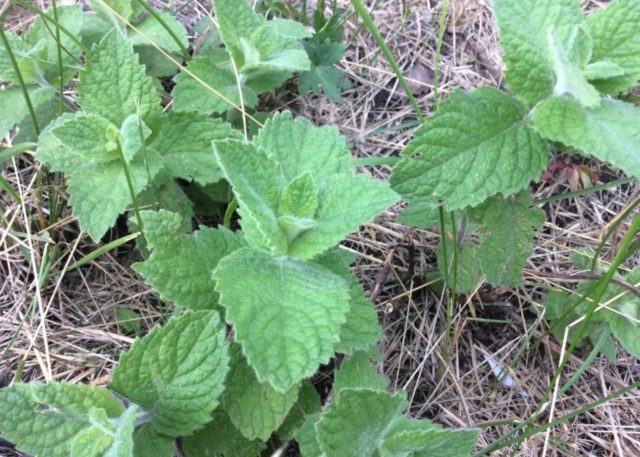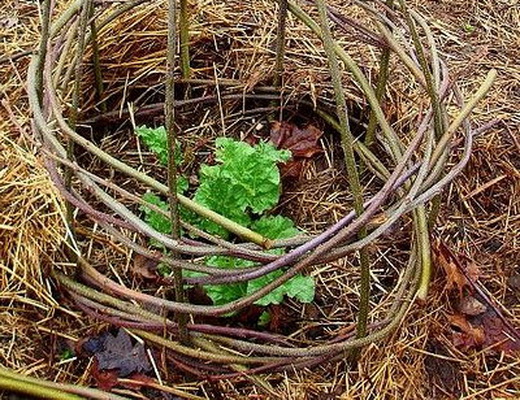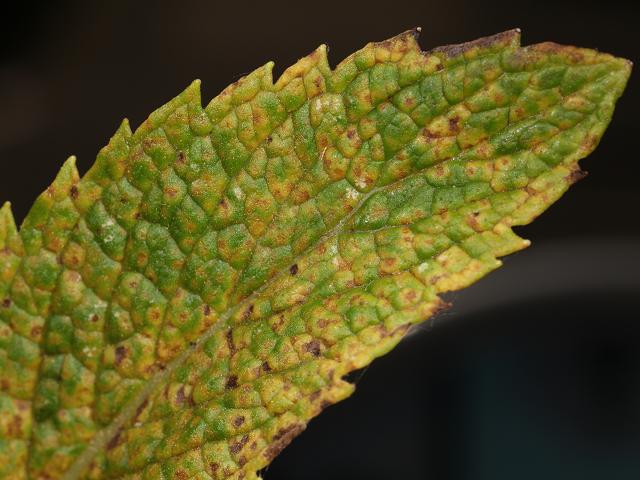Content
Pineapple mint (Mentha rotundifolia Ananasminze) is a unique plant. It is grown for its strong, pleasant aroma. You can place it outdoors or at home on a windowsill.
Description of pineapple mint
Externally, pineapple mint attracts gardeners with an unusual look. The bushes are not tall - from 25 to 40 cm. They grow rapidly, as during the growing season new lateral shoots appear.
Pineapple mint is also called variegated, as the plant stands out from other species with bright green leaves with pale yellow or white stripes. The leaf blades are round, not too large, with well-visible wrinkles. Serrated edges.
Pineapple mint inflorescences are also attractive. They are lilac with a shade of red. Buds are formed at the tops of the shoots. The inflorescences are large with a strong pleasant aroma.
Due to its decorative effect and small size, pineapple mint is grown in flower beds or in a pot culture on a windowsill.
The use of pineapple mint in cooking
Pineapple mint is a useful plant with medicinal properties, due to which it is widely used in cooking:
- Herbal tea. For its preparation, take fresh or dried leaves of the plant. You can prepare a drink only from mint or add raw materials to regular tea.
- Sauces and condiments. Additives to meat and fish are very tasty and spicy if you use pineapple mint leaves.
- In summer, mint is added to fruit refreshing drinks.
- When preserving vegetables and fruits, the leaves are added to the jars to increase the shelf life.
- Decoration. Surprisingly beautiful fringed leaves will enhance the appearance of cakes or pastries.
What is the flavor of pineapple mint
Pineapple mint leaves have a unique aroma. If you rub them, then it begins to seem that pineapples were cut nearby. Inflorescences have almost the same smell.
Where can you add pineapple mint
Pineapple mint is prized for its beneficial properties. In addition to cooking, pineapple mint leaves are used:
- As an air freshener. Dry pineapple mint is put in cloth bags and hung indoors, for example, in a bathroom or bedroom.
- Another application is based on the beneficial properties of the plant. Leaves and inflorescences are added during bathing as a relaxation agent and to relax muscles after a hard day at work.
- Doctors recommend preparing decoctions of pineapple mint for diseases of the bladder and gallstone disease.
Landing rules
To get a good harvest of leaves, you need to take care of the correct planting of plants. Most often, pineapple mint is propagated by seeds. Sowing time is very important.
Timing of hanging seeds for seedlings
Seedlings should not be grown in the fall or summer. In both cases, the planted plants will not have time to take root, and, therefore, may freeze out in winter.
Growing pineapple mint seedlings should be planned in mid-spring in order to plant them in a permanent place after the air and soil have warmed up to 10-14 degrees.
Seat selection
Before planting pineapple mint in a permanent place, you need to take care of a suitable area. Although it is a thermophilic plant, you should not set aside open areas for it. In the sun, mint is often sick with powdery mildew and rust. It is best to plant seedlings in an openwork shade.
Soil preparation
In order for pineapple mint to develop safely, it must be planted in a nutritious soil. Before digging, add compost, wood ash, humus. You can use special nutritional mixes that contain lime.
All types of mint can suffer from fungal diseases, the spores of which overwinter in the soil. Therefore, before planting, the soil must be poured with boiling water, to which potassium permanganate crystals are added.
Seedling preparation
The further development of pineapple mint depends on how high-quality seedlings are. For sowing, large full-fledged seeds are chosen. In order to destroy possible pathogens, the seed must be disinfected.
The seeds are etched in a pink solution of potassium permanganate for 25 minutes. Then they are washed in clean water and sown in a seedling box.
Seeds are scattered over the surface and pressed into moist soil. Cover with foil on top.
You can sow seeds directly into open ground. If there is a threat of night frost, then the bed is covered with foil. After a few true leaves appear, the seedlings are thinned out.
Planting seedlings
All types of mint, including pineapple, grow very quickly and can depress each other. Therefore, when planting, holes are dug in increments of 20-30 cm. Seedlings are planted to a depth of 5 cm. Propagated by shoots or small bushes after dividing. So that you can, if necessary, shelter them from frost, you need to wrap them with willow branches as in the photo below.
Seedlings are planted in moist soil. Immediately mulch with straw, sawdust or compost to retain moisture and prevent weed growth.
Features of growing and care
Despite the fact that pineapple mint is an unpretentious plant that does not require any special care, optimal conditions for growth must be created. This applies to:
- watering and feeding;
- loosening the soil and mulching;
- weeding and winterization;
- fight against diseases and pests.
Watering features
Pineapple mint grows well in moist, but not oversaturated soil. It is also impossible to overdry the soil in any case, since the root system may die. Therefore, in dry hot weather, it is advisable to water the planting every day.
When growing a plant in greenhouse conditions, it is necessary to maintain air humidity. It is recommended to spray the greenhouse itself and the fragrant leaves every day.
Warm water is used for irrigation. It is best to schedule work in the early morning hours or in the evening when the sun goes down. Water should be done carefully so as not to erode the soil near the roots.
Loosening and weeding
Pineapple mint, like other garden plants, needs to loosen the soil. It is carried out after watering to destroy the crust that does not allow oxygen to pass to the root system. You need to loosen to a depth of no more than 2-3 cm.
Gardeners understand that it is on weeds that pests and disease spores live. Therefore, the grass must be dealt with throughout the summer. In addition, weeds pull nutrients out of the soil, so the cultivated plants begin to wither. The yield of pineapple-scented leaves is drastically reduced.
Top dressing
During the growing season, pineapple mint needs nutrition. You can feed the bushes with organic fertilizers:
- infusion of mullein;
- wood ash;
- infusion of green herbs.
Preparing for winter
In autumn, the green mass of the plant must be cut off near the ground. This procedure will save the bushes next year from diseases and pests. The cut stems are burned regardless of whether they are infected or not.
The landing site is covered with rotted manure. If the winters are snowy, a 25 cm layer is sufficient. In other cases, the cover should be larger.
Pests and diseases
In order to harvest healthy leaves for culinary or medicinal purposes, mint must be protected from pests and diseases.
Diseases and pests | Symptoms | Control measures |
Verticillary wilting | Leaves on mint first darken, then dry | Compliance with crop rotation Weed removal |
Leaf rust | Fungal disease first affects the lower part of the leaf blade, then the entire leaf. Red spots appear on it, then holes with ragged edges | Use special treatment products |
Spider mite | After wintering in the soil, it multiplies rapidly. It feeds on the sap of the leaves, which is why they begin to dry. In addition, a thin cobweb is visible on the plant. | The use of special drugs. From folk remedies use infusion of tobacco with laundry soap |
Meadow moth | The food is plant sap. Gradually, the leaves dry out ahead of time and fall off | Application of insect repellents |
When and how to harvest pineapple mint
Leaves can be harvested in the first year of planting. Mid-July is a time for cutting, as nutrients and essential oils have accumulated in the leaf blades.
How to dry pineapple mint properly
For drying, the leaves are not recommended to be washed, since they will dry for a long time from moisture, they may even rot. You need to cut the stems of the mint. Then tie into bundles. Hang in a room out of sunlight and the air circulates well.
Raw materials are stored in a dry room in a tightly closed jar so that moisture does not get in and the aroma does not disappear.
Conclusion
Pineapple mint is a plant that can be grown on a windowsill, which is suitable for those who do not have a plot of land. In this case, fresh pineapple mint leaves can be plucked all year round.
